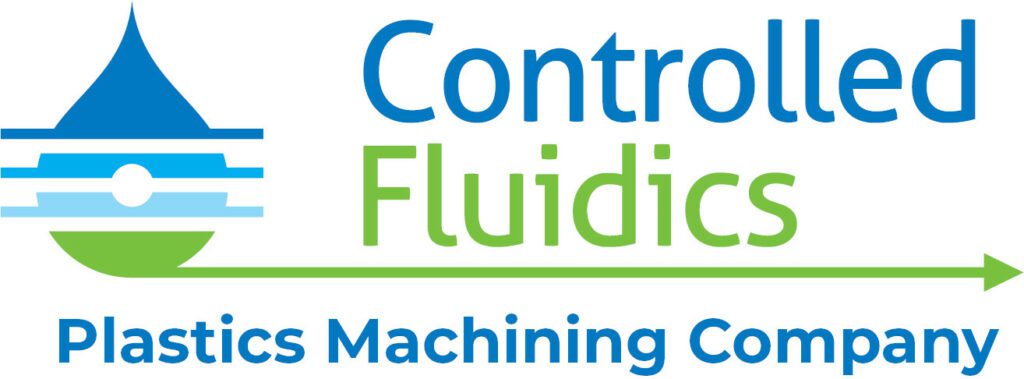COC and COP Plastic Manifolds (Podcast)
In this podcast, we talk about the two amorphous plastics that are growing in popularity — COC and COP. Tom Rohlfs outlines the advantages of these materials for manifolds that need robust chemical resistance, and then, he shares why they’re becoming so prevelant in the life sciences industry.
John Maher: Hi, I am John Maher. I’m here today with Tom Rohlfs, President and Principal Engineer at Controlled Fluidics, a Plastics Machining Company specializing in precision manifolds. Our topic today is COC and COP plastic manifolds. Welcome, Tom.
Tom Rohlfs: Hello, John. Thanks for having me.
What Is COC and COP Plastic?
John: Sure. Tom, what is COC and COP plastic?
Tom: Brian, COP and COC, their long name is cyclo-olefin polymer or cyclo-olefin copolymer. COC is produced by topaz and COP is produced by zion chemical. These are two newer plastics that have come on the market, and they really are focused on life science applications. Seeing a lot of opportunity there where it’s a material that has a lot of advantages that the other materials in the amorphous class are short on.
Why Are COC and COP Great for Manifolds?
John: So what are some of the characteristics of COC and COP plastics that make it particularly useful for manifolds?
Tom: Sure, that’s great. So the big takeaway for these materials is they’re very good in chemical resistance. In fact, they are best in class on the amorphous materials, even better than Ultem. So they’ve got excellent chemical resistance. You can run a whole host of more aggressive solvents.
Even… I recently had an application where a customer wanted to run acetone through a COP manifold. In normal cases with the other amorphous materials, the acetone would just simply eat away the plastic. COP is resistant to it and it’s a good fit for that customer. They are very clear.
So we’ve talked in the past about acrylic, how it’s got that great window glass type look for optical applications for building optical windows. COP and COC have that same clarity. So they have great light transmittance, they have nice clear material for bio detection and things like that. One of the things that makes COP unique also is low autofluorescence.
So in many processes, a customer would want to, or a person utilizing a device would want to shine a UV light to examine similar cell sorters, to examine cells or to determine a characteristic about their particular material. COP is very low, so that doesn’t interfere with the detection, the bio detection in the particular reaction. They’re very low water-absorbing. So one of the downsides to Ultem is it tends to absorb water.
COP doesn’t absorb water. It’s 10 times less than acrylic water absorption, so fairly low water absorption. It is a biocompatible material. So you can get USP Class Six. We’ve talked about certifications. Again, this speaks to the life science industry, of course, and it’s a very brittle material. So one of the downsides is it is a brittle material. Again, like acrylic, you drop it on the floor, it’s going to chip, but it doesn’t scratch easily. So from a handling perspective, it is really friendly in lab type requirements.
Advantages of COC and COP
John: Are there any other disadvantages besides its brittleness, COC and COP plastics, that would make it difficult to use for certain applications?
Tom: No, it actually has quite a few advantages. I think from my perspective, the brittleness is probably its largest disadvantage. We do find it can ship easily, so handling is important. But on the plus side, you get the scratch resistance. A couple other benefits to it is it’s got a wide range.
There’s a number of grades that you can buy in COP and COC, and you can buy grades based on the glass transition temperature. So if you need a higher, more robust continuous service temperature, you can pick materials with higher glass transition temperatures and just a little touch on glass transition temperatures. That’s the point when material starts transitioning from being something hard as being something soft. There’s a lot of grades for these materials, so you can really dial in on what grade is appropriate for you there.
It’s very dimensionally stable. So from a machining perspective, we can produce very close tolerance parts and they don’t move, they don’t creep over long use. Parts stay stable and don’t change. We’re finding that in many applications, this is becoming the go-to material. This is kind of like a combination of Ultem and acrylic put together where you get best in class light transmittance and transparency, but also the resistance of chemicals and things like that. On the price point, it’s significantly half the cost of Ultem, so it’s significantly less expensive, so you don’t get hit in the pocket either.
Applications for COC and COP Manifolds
John: Okay. What are some of the applications that you see COC and COP being used for manifolds or the applications or industries in particular?
Tom: Yeah, so COP and COC are widely available injection molding rates, so anything that’s consumable in the medical device world is often used for this material. We see in a lot of imaging applications, in particular, anyone who wants to qualify their product via UV, as I mentioned, it’s very low autofluorescence utilizing it like cell sorting and any device where imaging or bio detection is important, it’s probably the most up and coming material in relationship to all the amorphous plastics for manifolds and for life science applications that we get.
John: All right. Well, that’s really great information, Tom. Thanks again for speaking with me today.
Tom: You’re welcome. Take care.
Check Out ControlledFluidics.com
John: For more information, you can visit the website at controlledfluidics.com or call 603-673-4323.
